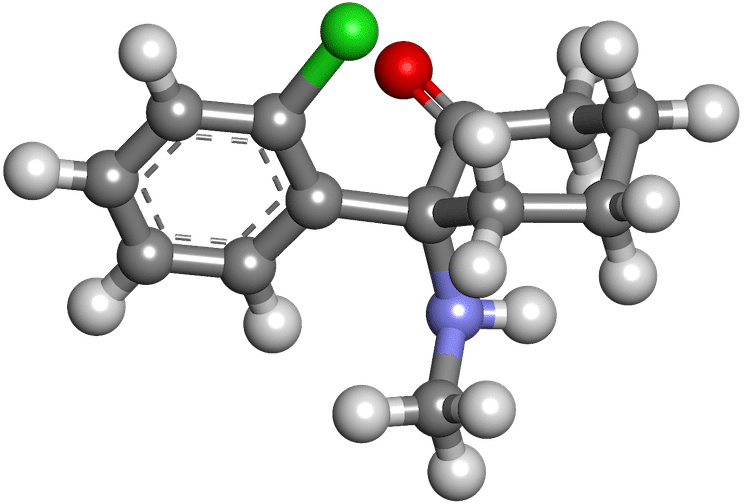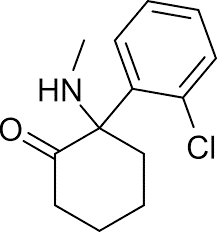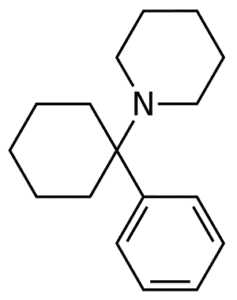
The History of Ketamine: From a Street Drug to the Doctor’s Office
Who knew that street drugs PCP and Angel Dust were precursors to an effective treatment for depression and play role in the history of ketamine? Read on and learn how ketamine evolved from a pain killing anaesthetic to a street drug to a potential new weapon to battle mental illness.
Table of Contents
A Brief History of Ketamine
To most, the history of ketamine is as a street drug, making it an unlikely candidate as a breakthrough treatment in the management of treatment-resistant depression. While not a front-line antidepressant, its popularity is surging. Ketamine, typically used as an anesthetic, has been an interest to psychopharmacology for almost 20 years, since researchers R.D. Sofia, J.J. Harakal observed the antidepressant effects of ketamine and showed that it alleviated depression in a matter of hours, in contrast to traditional antidepressants, which take days to weeks to start taking effect.
It has been proposed as a potential fast antidepressant in patients with high suicidal risk. Regarding ketamine’s use as an anesthetic, the World Health Organization estimates it is the most widely used anesthetic in the world and lists it as an essential medicine, a category of drugs that all developed countries should have on hand. While many doctors probably won’t give it to you as a first-line antidepressant, it may be a viable course of action for those with long-standing depression.
How Does Ketamine Work?

Researchers believe the key is neuroplasticity.
Much like the mechanisms behind aspirin, medical professionals and scientists still don’t know the exact mechanism by which ketamine improves depression, but a leading theory suggests that it affects neural change by stimulating synapse regrowth of synaptic connections between neurons, or in layman’s terms, rewiring the brain.
Most antidepressant medications influence the levels of the “monoamine” based neurotransmitters like serotonin, norepinephrine and dopamine; Ketamine’s mechanism of action is via the neurotransmitter glutamate, a common chemical messenger in the brain. As a neurotransmitter, glutamate influences depression via neuroplasticity, which are changes at the synaptic level that brains undergo in response to learning and memory experiences.
How was Ketamine Discovered
Ketamine was discovered in the search for an anesthetic (a substance that induces insensitivity to pain) with analgesic or pain-reducing properties and was derived from PCP/phencyclidine.
When was PCP invented?

The history of ketamine began in the 1950s at Parke-Davis and Company with the synthesis of PCP (phencyclidine ) in the search for anesthetic, a substance that induces insensitivity to pain that possesses analgesic or pain-reducing properties. PCP created potent anesthesia and analgesia in animals and induced a catatonic state described by researchers as an “akinetic state with a loss of orthostatic reflexes but without impairment of consciousness, in which the extremities appear to be paralyzed by motor and sensory failure,” so it was investigated as a human anesthetic under the trade name of Sernyl (Parkes-Davis) but had too many hypnotic side effects to be utilized. Instead of a peaceful recovery from being anesthetized, a portion of patients experienced acute emergence delirium lasting hours after their operation was over. They described feeling sensory deprived and the loss of sensations in their limbs. Further research demonstrated that phencyclidine produced a sensory deprivation syndrome in many patients.
Where Does Ketamine Originate from?
In the search for alternatives to PCP, related compounds were investigated, and one CI-581 (2-(O-chloro-phenyl)-2-methyl-amino cyclohexanone), named ketamine because it was a ketone attached to an amine, was found to be an effective cataleptic, analgesic and anesthetic without the hypnotic side effects.
History of Ketamine in Psychiatry
Administered to human test subjects in 1964, patients described their feeling of floating in outer space and having no feeling in the limbs. So ketamine became known as a ‘dissociative anesthetic, characterized as the “electrophysiological and functional dissociation between thalamocortical and limbic systems. First patented in Belgium in 1963, ketamine was officially approved for human consumption under the name Ketalar (Ketamine HCL), by the United States Food and Drug Administration in 1970, and because of its medical properties and its margin of safety, it was widely used as a field anesthetic during the Vietnam war.
Ketamine-induced analgesia was less potent and of considerably shorter duration of action than PCP, particularly with regard to psychic problematic effects. Despite this finding, ketamine’s 1969 launch in Britain was considered a failure, and the associated hallucinations were so unpleasant that patient acceptance was much lower than with the barbiturates. Ketamine leads to psychological dissociation, which has limited its extensive use in clinical practice. Ketamine-induced psychological dissociation is characterized by altered feelings and perceptions, including auditory and visual delusions. In addition, higher doses of ketamine may trigger schizophrenia-associated symptoms, including changed perceptions. In acute usage of ketamine, these effects are resolved within 2 h; however, long-term use could cause several persistent and pronounced neuropsychiatric symptoms, including symptoms associated with schizophrenia, cognitive impairments, and a reduced psychological comfort zone.
The psychedelic effects of ketamine, the arrival of new intravenous hypnotics such as propofol and abuse that followed the Vietnam War led to a decrease in the use of ketamine in the affluent world. The combination of illicit abuse and its psychedelic effects resulted in ketamine being placed among the class III substances of the US Controlled Substances Act in 1999.
History of Ketamine for Depression
In addition to relieving physical pain, ketamine was found to ease pain of a psychological nature. An unexpected finding occurred during a study observing the effects of ketamine in low doses as a model for schizophrenia. In depressed patients, ketamine had an antidepressant effect. In 2000, the first randomized, double-blinded study was published in Biological Psychiatry and reported the antidepressant effects of ketamine in patients suffering from depression. And in 2012, researchers called ketamine “the biggest breakthrough in depression research in a half-century.” Other studies show that ketamine may be effective in OCD, PTSD, anxiety, and suicidal ideation as well.
New Life as an Antidepressant?
The induction of near-death experiences and the psychedelic properties of ketamine led researchers to investigate the therapeutic use of ketamine in palliative medicine. A book by an English psychiatrist, Dr. Jansen PhD, “Ketamine: Dreams and Realities”, brought to light that under proper medical supervision, ketamine could be used to treat certain mental disorders and ushered in the term KPT: Ketamine Psychedelic Therapy.
Since the mid-1990s, multiple clinical studies found that ketamine relieves pain short term, demonstrating efficacy in treating chronic pain syndromes such as fibromyalgia, migraines and burns. Additionally, ketamine also eases psychological pain. The first randomized, double-blinded study that examined ketamine was published in 2000 in the medical journal Biological Psychiatry. Researchers reported the antidepressant effects of ketamine in patients suffering from depression. Other researchers’ studies show that ketamine may be effective in OCD, PTSD, anxiety, and suicidal ideation. While researchers are still studying ketamine as a treatment for severe depression, some psychiatrists are trying ketamine experimentally with their patients who have treatment-resistant depression.
The History of Recreational Ketamine Use
Ketamine is produced commercially in a number of countries, including the United States. Most of the ketamine illegally distributed in the United States is diverted or stolen from legitimate sources, particularly veterinary clinics. PCP entered the street scene in the 1960s in Haight Ashbury, San Francisco—a district known for being central to the hippie movement, as well as for its culture of psychedelic drug use. PCP is used for its mind-altering effects and can be snorted, swallowed, or smoked. Smoking PCP is the most common method, according to the Drug Enforcement Administration (DEA).
Through the 1970’s, and continuing through the early 1980’s, ketamine became increasingly available for illicit use via capsules, powder, tablets, crystals, liquids and injectable solutions. The history of recreational ketamine use evolved as other ingredients were added to the drug altering its effects.
A good example of this evolution is MDMA/ecstasy. Known as a club drug since the mid-1980’s, it has been linked to a variety of dance cultures; raves culture elevated the use of ketamine, and when it first hit the United Kingdom market, many ravers took ketamine in pill form and thought it was ecstasy. The key difference between ketamine and ecstasy is that ketamine can cause slurred speech or immobilization. Recreational ketamine use has evolved; now it is part of the “post-clubbing experience”.
By the end of the 1990s, the most rapid rise of Ketamine abuse was in the Hong Kong dance culture where, since 2000, it has been regulated as a Schedule I drug under Hong Kong’s Chapter 134, Dangerous Drugs Ordinance.’
Related Articles
- Check out Frshminds’ Guide to Ketamine Clinics to learn about ketamine in order to select a clinic that meets your needs.
- 5 Things You Should Know Before Starting Ketamine Infusions for Bipolar Depression
- The Secret to Getting Health Insurance to Cover Ketamine Therapy
- Your First Ketamine Therapy Session: What to Expect
- Ketamine as a Rapid Onset Antidepressant
- A Ketamine Clinic Near Me: Roots Behavioral Health
- A Ketamine Clinic Near Me: The Infusion Clinic of Ocala
- A Ketamine Clinic Near Me: Dr Ken Starr in Arroyo Grande
- Ketamine Assisted Psychotherapy (KAP): Demographics, Data and Outcomes
- Meet ‘Sarah’, She Uses Ketamine Infusion Therapy for Depression
- Talking with a Ketamine Infusion Doctor: Dr. Franklin
Header Image Credit
Nerdking2015, CC BY-SA 4.0, via Wikimedia Commons

Comments